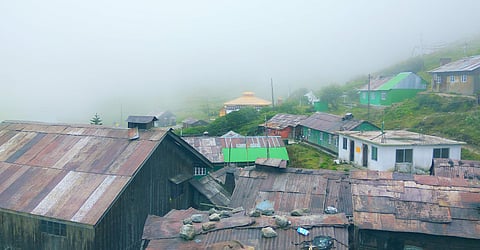

NEW DELHI: The Dokalam standoff in Sikkim has raised concerns about India’s military infrastructure preparedness along the China border. Given the need to bolster defence preparedness along the Line of Actual Control (LAC), the Union Environment Ministry has now waived off the mandatory requirement of forest nod for defence infra projects up to a distance of 100 km from the LAC.
The order was issued by the Ministry of Environment, Forests and Climate Change on August 28, the day India and China decided to ‘disengage’ their soldiers in the Dokalam region. The army had in the past raised concerns over the slow pace of green clearances delaying key infra projects. During the standoff too, concerns were raised about poor army infra availability in areas along the LAC for transporting forces and ammunition, even as China has successfully built roads and railway lines till the LAC.
The Environment Ministry in 2014 gave ‘general approval’ under Section 2 of the Forest Conservation (Act), 1980, for diversion of forest land for construction and widening of two-lane road by the Boarder Roads Organisation (BRO) and other road construction agencies entrusted with the job by the Ministry of Defence, in areas falling within 100 km aerial distance from the LAC. The latest order extends the general approval to military infrastructure projects like ammunition depots, barracks and logistics hubs among others that are critical for the army’s preparedness.
This gives a free hand to the army to develop infrastructure and it doesn’t have to seek approvals from the Environment Ministry’s Forest Appraisal Committee (FAC) for using forest land for non-forest purposes. The time duration for forest approvals ranges from a minimum three months to one year. “Earlier, in 2014, we had given general approval for roads by BRO. Now, this general approval is extended to army infrastructure projects. How will we save the environment if the country is not safe,” said an Environment Ministry official.
The LAC with China traverses five states — Jammu and Kashmir, Himachal Pradesh, Uttarakhand, Sikkim and Arunachal Pradesh. Skirmishes and minor stand-offs between the Indian army and the Chinese People’s Liberation Army are common along the 3,500 km LAC but the Dokalam stand-off was triggered after China tried to build a road in the region, which belongs to Bhutan and is strategically significant for India.
Minister of State for Home Affairs Kiren Rijiju had informed Parliament in July that infrastructure development is happening at a steady pace along the LAC and that Sikkim, Arunachal Pradesh, Himachal Pradesh and Jammu and Kashmir have set up empowered committees to sort out issues related to land acquisition, forest/wildlife clearance and allotment of queries, among others. The Home Ministry is also reviewing defence infrastructure development projects on a real-time basis and a steering committee under secretary (Border Management) has been set up to monitor the progress of these projects.